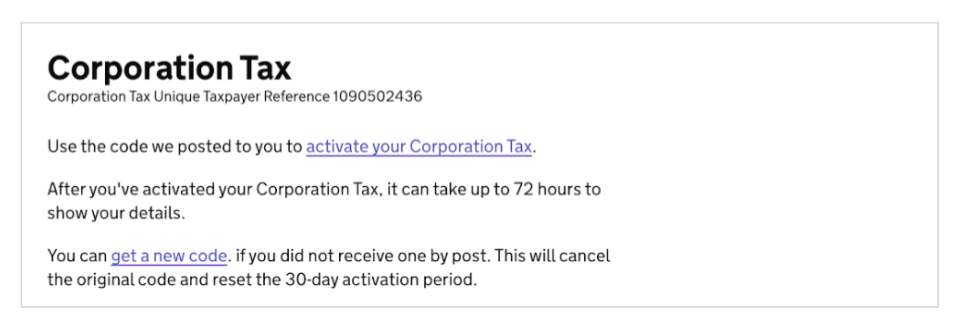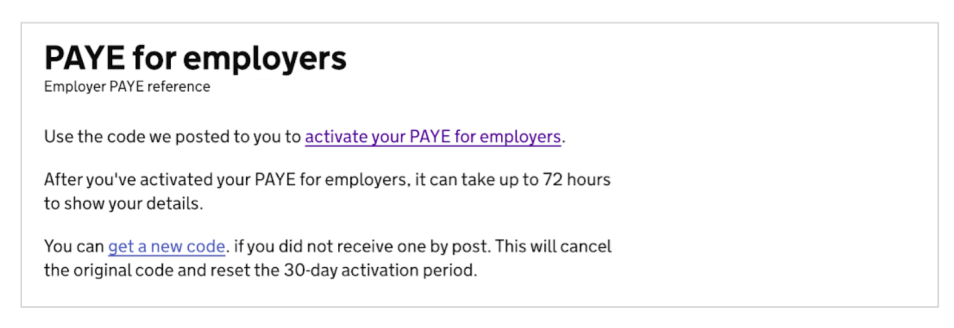How to register for UK taxes?
Taxes Explained
- Corporation Tax - The tax paid on any corporate profits. You have to register for corporation tax and file accounts annually with Companies House as well as submit an annual tax return (CT600) with HMRC. Most companies register for Corporation Tax when registering the company, but if you haven't done this you can register here.
- PAYE (Payroll Tax) - PAYE (pay-as-you-earn) is HMRC's system to collect Income Tax and National Insurance from employment. As an employer, you have to register for PAYE if you intend to employ anyone in the United Kingdom. You can register here.
- VAT (Sales Tax) - Most businesses make 'taxable supplies' to businesses & consumers. Any supplies made in the UK which are not specifically exempt are taxable supplies. If you make taxable supplies (revenue) of more than £90,000 per year or expect your revenue to grow above this level, you have to register for VAT. If you are to register, we recommend choosing the quarterly scheme if eligible.
You can voluntarily register for VAT with any revenue below £90,000. When you register for VAT, you will have to charge VAT (usually 20% as the default rate) on any sales that you make, but you can also reclaim VAT on any purchases you make. If you claim back more VAT on purchases than you pay in supplies, then HMRC will make a repayment to you. You can register here. For even more details, HMRC's VAT registration guide is here.
List of information to store
During the registration process for Corporation Tax, PAYE, and VAT you will receive several codes, references, and numbers. Ensure that you keep a record of the following:
- Companies House Authentication Code (sent in the post after company registration)
- Corporation Tax UTR (Unique Taxpayer Reference) Number
- PAYE Employer Reference & Accounts Office Reference
- VAT Number
Corporation Tax Registration Guide
- After registering your company with Companies House, navigate to this link.
- HMRC will post an activation code to your company address after you fill in the details.
- Once you’ve received the activation code by post, you can activate your Corporation Tax by logging in to Government Gateway here and clicking on 'Activate your Corporation Tax', as per the image below.

PAYE Registration Guide
To register your business for PAYE (to allow you to employ people & do payroll), click on this link & fill in the registration form with your personal and business details.

You may come across some quite technical questions. Below are some tips for the more complex questions in the PAYE registration form:
Over the next 2 months, will the company pay out any non-cash incentive awards?
Most startups pay people in cash salaries maybe with cash bonuses. If you are only doing this, then your answer to this question would be no. If you do think you will make non-cash incentive awards then you should get additional advice. You can later set up an EMI scheme for employees, which is reported separately in a section of the HMRC site called 'Employee-related securities'.
Does the company make pension payments to a former employee or their dependents?
If you don’t have a pension set up yet, this is very unlikely, so your answer is probably no. If you’re unsure if this applies to you, please check the guidance on HMRC's site.
What is your relationship to the company?
If you are a director filling this out for your own business, the best option is usually to choose the director option.
- After you have submitted your application for PAYE, you will receive a letter in the post with your PAYE & Accounts Office reference numbers. To run any payroll, you will need these numbers.
- You will also receive an activation code from HMRC in the post that activates your PAYE. To input this code, navigate to this link. In the portal, select 'Activate your PAYE for employers'. Then, input your Activation Code in the relevant box and press Get Access.
- If you need to make any payments to your team and your PAYE registration is taking longer than expected, take a look at this guide here.
VAT Registration Guide
To register your business for VAT, you will need information on you personally & your business. Click on this link here to fill in the details.
Below are some tips for the more technical questions in the VAT registration form:
Should I register for annual or monthly VAT?
We usually recommend registering for quarterly VAT. Monthly means you have to do 12 returns a year which will increase your accounting cost & admin frequency. Annual is a messier system because you still have to make payments (but they are simply estimates). Quarterly is cleaner as you can do exact amounts 4x a year instead of rough amounts 4x a year or exact amounts 12x a year.
Is the business applying for the Agricultural Flat Rate Scheme?
If you are not in business as a farmer, then you are not usually eligible for this, so the answer would be no.
Will the business do any of the following activities over the next 12 months? Tell us if the business will: Sell assets bought outside the UK and claim a repayment of VAT under Directive 2008/9EC or Thirteenth VAT Directive or sell goods into Northern Ireland from an EU member state.
This mostly applies to companies with significant imports and exports, so most businesses without cross-border trade will select no. If you engage in cross-border trade please read the guidance but it may be best to seek some specialist advice.
Why do you want to register the business for VAT?
Most businesses are providing taxable supplies (i.e. goods and services) that will meet the criteria in the first box (i.e.‘It’s selling goods or services and needs or wants to charge VAT to customers’). If you think you may meet the other criteria, you may want to seek additional advice. Some businesses, like holding companies that don’t provide taxable supplies, shouldn’t register for VAT.
What should my registration date be?
Most instances will see a business expecting to go over the VAT threshold of £90,000 revenue, in which case the registration date will be when you expect this to happen or you expect to be making a relevant supply within the next 30 days. If you are registering voluntarily, there is more nuance. You must be 'in business', which means that you are doing a continuing activity with the intention of making supplies for consideration.
Here is HMRC's guide on when to choose (notably areas 3.9 - 4.4), but you should make sure that you meet HMRC's definition of in-business & that you want to register for VAT voluntarily. After registering, you cannot change the registration effective date & the letter from HMRC confirming this can often take 2-3 months. If you select today's date as the effective date, you will have to pay VAT on all sales made from today, even if the letter confirming your effective date arrives in 3 months time. This means that you will have to account for VAT from this date & potentially re-issue invoices if VAT was charged for this period. It may be worth pausing bookkeeping at the transition towards becoming VAT registered to ensure you don't have to recategorise the VAT status on your transactions. Depending on the market dynamic and your specific circumstances, it may be worth raising prices from your effective date even if you haven't yet received your HMRC letter of registration.
New content every Monday
No spam. Unsubscribe anytime.